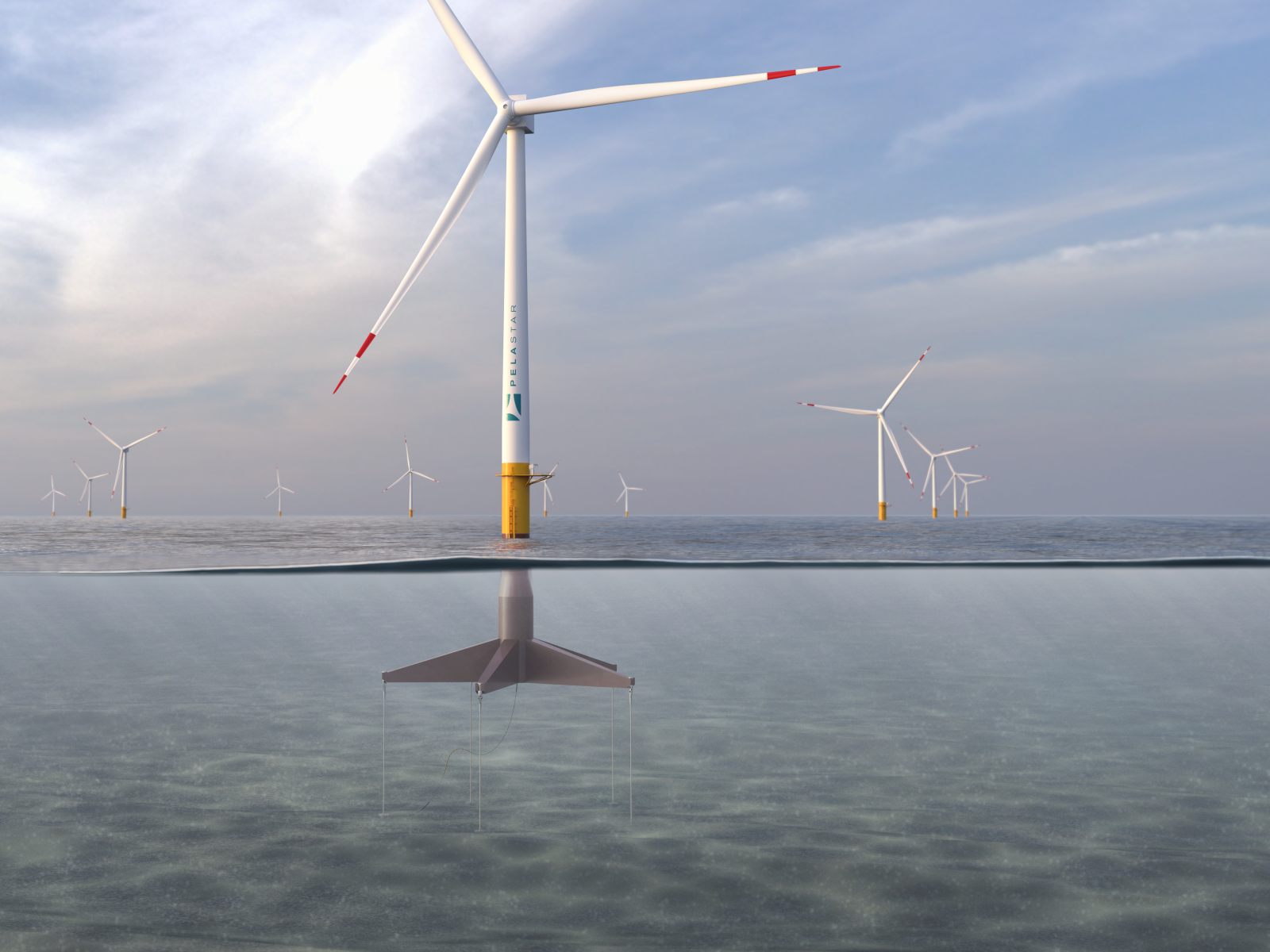The Future is Floating
PNNL supports PelaStar in deployment of innovative offshore wind technology

The premier tension leg platform for deep water offshore wind developed by PelaStar, a Glosten Company.
(Image by Kris Volpenhein | Glosten)
Pacific Northwest National Laboratory (PNNL) is supporting the floating offshore wind industry to enable gigawatt-scale development of floating offshore wind in the United States while minimizing environmental impacts and supporting local workforces.
The project supports PelaStar, a Glosten Company. Glosten is a Seattle-based naval architecture and marine engineering company working toward deployment of the PelaStar tension leg platform (TLP). PelaStar aims to help lower the levelized cost of energy and operating costs for floating offshore wind generation, as well as minimize environmental impacts while implementing innovative deployment methodologies.
The TLP foundation system includes five arms, each tethered to the seabed using a tendon system of synthetic fiber cables and high-vertical-load anchors. It is designed for stability, minimum-cost installation, and adaptability to a variety of turbine sizes, water depths, and environmental conditions—enabling economical wind farm deployment in deep offshore sites with high wind speeds that were previously thought to be “un-developable.”
PNNL’s role involves developing objective and quantified environmental, ocean co-use, and workforce impact analyses specific to the TLP’s design and installation methodologies, as well as its operation and maintenance processes.
“Offshore wind represents a huge opportunity for renewable energy generation, with the technical potential to provide more than 4,000 gigawatts of power capacity for U.S. electricity consumers,” said PNNL Wind Energy Program Manager Alicia Mahon. “As new floating offshore wind technologies are deployed, it will be important for developers to consider the potential impact of their technologies on the environment and local communities—and as much as possible, identify strategies that benefit disadvantaged and underserved groups.”
Workforce and community analysis
In terms of workforce development support, PNNL will work with the PelaStar team to identify feasible locations for TLP assembly and deployment, as well as strategies for meeting workforce needs. The preliminary workforce development plan will identify the approximate number of workers, necessary skills, and potential training needs for the company to consider, along with outreach plans and methods for promoting workforce diversity.
PNNL will also provide environmental and ocean co-use support, helping PelaStar identify and assess potential ecological, socioeconomic, and emissions impacts related to the manufacturing, installation, and operation of its platform design. In addition, the analysis will help develop best practices for evaluating, avoiding, and mitigating related concerns.
FLOWIN prize technical support
The impetus for this project is PelaStar’s selection as a Phase 1 winner of the U.S. Department of Energy (DOE) Floating Offshore Wind ReadINess (FLOWIN) prize, a first-of-its-kind challenge from DOE’s Wind Energy Technologies Office to tackle the floating offshore wind industry’s biggest supply chain challenges. Phase 1 winners receive $100,000 cash, plus a $75,000 voucher for technical support from DOE’s national laboratories as the winners develop pathways for mass manufacturing and deployment of their floating offshore wind solutions.
PelaStar chose to work with PNNL because of the institution’s multidisciplinary experience tackling the most complex challenges facing offshore wind development in the United States, along with PNNL’s expertise in wind resource characterization, community benefits, and environmental and co-use considerations.
“We are excited to partner with PNNL for our FLOWIN efforts,” said PelaStar Commercialization Lead Kris Volpenhein. “As we continue on our path toward commercialization, the maturity of our design allows us to pivot our focus to industrialization and verifying the broader environmental benefits of the PelaStar TLP. PNNL is uniquely suited to bring their analysis and insight to this topic and help create plans that will enable these benefits for the developers and communities involved in utility-scale projects.”
In addition, the PNNL-Sequim campus in Sequim, Washington, houses the only marine research facilities in the DOE complex.
“The Sequim campus offers unique capabilities to our researchers and partners,” Mahon said. “It is a critical resource in support of planning, designing, installing, monitoring, and maintaining the offshore wind energy infrastructure and technology of the future.”
Learn more about PNNL’s Wind Energy capabilities.
Published: September 11, 2023